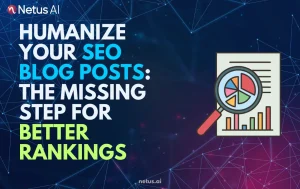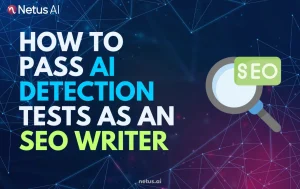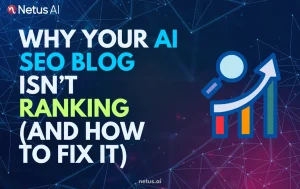
Why Google’s ‘Who, How, Why’ Framework Matters for EEAT | NetusAI
Why Google’s ‘Who, How, Why’ Framework Matters for EEAT AI can create articles in seconds. But here’s the truth: speed is not enough. Google wants

Content writer and editor for Netus.AI
Programming Similarity Checker. Programming code forms the foundation of any software application, and creating efficient code is essential for developing seamless programs. Students learning programming languages and professional software developers alike need to write unique and innovative code for their projects. The use of a code similarity checker can help detect instances of plagiarism and facilitate improvements in the code.
Coding is fundamentally a creative process, and using plagiarized code demonstrates a lack of originality, which is a detriment to software development. However, it can be challenging for students and developers to discern non-original code due to the absence of strict citation rules in the programming world. As a result, unintentional plagiarism can occur, leading to issues with code integrity and quality.
Utilizing external help in the programming domain isn’t strictly prohibited, as long as the codes borrowed come from open-source platforms. It’s important, however, to avoid using codes protected by copyright laws, as doing so can result in legal issues, damage one’s reputation, and possibly result in hefty fines.
Thankfully, there is a solution for ensuring code integrity—programming code plagiarism checkers. These tools operate similarly to document plagiarism checkers and can be employed by both code writers and instructors. They scan the program for any copied codes and highlight possible violations, helping to maintain academic integrity and eliminate unethical practices.
In summary, seeking external assistance is acceptable, provided you draw from open-source platforms and not copyrighted content. By using a code plagiarism checker, both programmers and instructors can maintain ethical standards and uphold academic integrity in the world of programming.
Code plagiarism is a concern for programmers and educators alike. Code plagiarism checkers have been developed to detect code similarities and maintain the uniqueness of source code. These tools use advanced algorithms to analyze logic patterns and highlight instances of copied or paraphrased code.
One popular method of detecting similarities in programming code is the use of MOSS, which stands for Measure of Software Similarity. Another effective tool is Codequiry, a code similarity checker that provides detailed results and allows for peer-to-peer checks and web checks.
To use a code plagiarism checker, follow these steps:
Using a code plagiarism checker not only helps identify copied code but also fosters the development of original programming solutions. By integrating plagiarism detection tools into the programming workflow, programmers can uphold ethical standards and maintain the integrity of their work.
When working with programming languages like Python, PHP, and C++, it’s crucial to ensure the code you’ve written is original and not plagiarized. Here are some steps to help you maintain the authenticity and uniqueness of your program code:
There are external sources you can consult for writing program codes, such as open-source projects. However, you should be aware of certain limitations and regulations, especially for students. Make sure to verify the source’s reliability and the extent you can use the information provided.
If unsure, seek clarification from a supervisor or instructor. Knowing the rules surrounding the use of outside code will help you strike a balance between gathering inspiration and maintaining originality.
All programming languages allow the insertion of comments. It is good practice to include comments in your code, particularly when you’ve used external references. By adding comments, you can inform the examiner of the specific places where copied code has been used, helping to separate original content from borrowed material.
Collaborative projects in programming are quite common. When participating in group assignments or projects, make sure to follow ethical practices and get permission from your supervisor if required. Collaborating doesn’t imply copying a fellow team member’s work; doing so would be considered cheating.
Instead, focus on providing equal effort in the development process to ensure that the final program code is a product of your collective creativity and unique ideas.
Remember, original content is highly valued in the programming world. Utilizing programming code checker tools, such as those offered by Copyleaks, can help you avoid common mistakes that lead to copied code. As a result, it’s crucial to embrace your creativity and strive for originality in your code.
Code plagiarism can be easily detected through tools like Copyleaks’ Codeleaks. Therefore, always be cautious when borrowing code from external sources and ensure that your work adheres to the principles of authenticity and uniqueness in programming.
There are several free tools available for checking code similarity. Some of the top choices include Copyleaks, HackerRank, and Codequiry.
Code similarity checkers employ various algorithms and techniques to detect similarities between code segments. Some tools use machine learning models and self-learning algorithms to analyze coding patterns, while others employ techniques like tokenization, longest common subsequence, and fingerprinting.
While Turnitin is known for its document plagiarism detection capabilities, it’s important to note that Turnitin has partnered with Scribbr to provide their AI Detector for code similarity detection. So, it is possible to use Turnitin in conjunction with other tools to detect code similarities in programming assignments.
Online programming similarity checkers can be highly effective for academic purposes. By employing advanced algorithms, these tools help educators and students identify potential instances of plagiarism in programming assignments and maintain academic integrity. However, it’s essential to choose a reliable and accurate tool to ensure the best results.
There are MOSS checkers available for free use, but many require permission or an invitation from the developer. For example, the original MOSS system developed by Stanford University requires users to request an access token for free use. Many online code similarity checkers also employ MOSS-like algorithms to identify similarities in code.
When assessing the effectiveness of a programming similarity checker, consider the following factors:

Why Google’s ‘Who, How, Why’ Framework Matters for EEAT AI can create articles in seconds. But here’s the truth: speed is not enough. Google wants

SEO Writer’s Guide to Google’s Helpful Content Update Keeping up with Google’s algorithm changes can feel like a relentless game of whack-a-mole. Just when you

Can AI Content Be Safe for SEO in 2025? Let’s start with the question of keeping every content strategist, SEO pro and blogger awake at

Humanize Your SEO Blog Posts: The Missing Step for Better Rankings You’ve done everything by the book. Your keyword research is impeccable. Your meta descriptions

How to Pass AI Detection Tests as an SEO Writer Let’s paint a familiar picture. You’ve just finished a blog post. The headline is sharp,

Why Your AI SEO Blog Isn’t Ranking (And How to Fix It) You embraced AI for your blog. The promise was intoxicating: high-quality content, published
@ 2024 Netus AI.